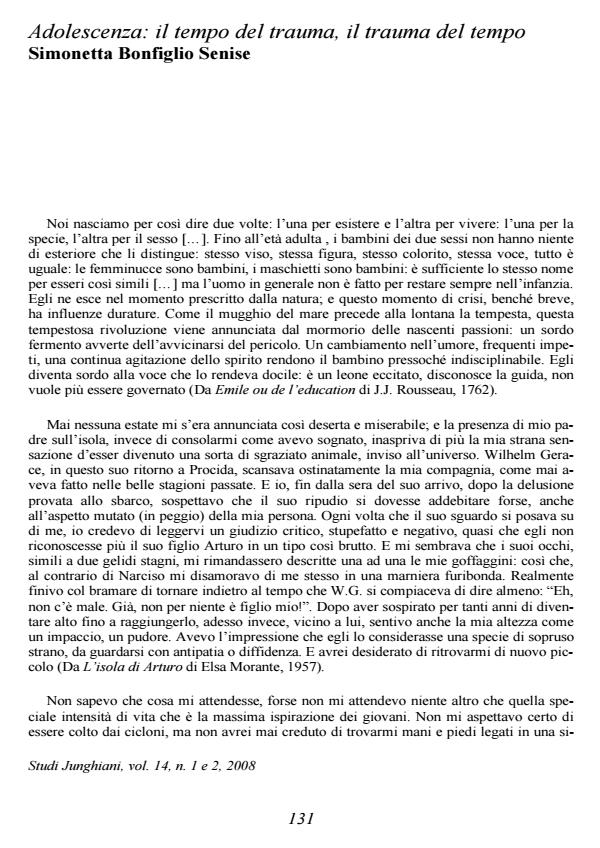Adolescenza: il tempo del trauma, il trauma del tempo
Journal title STUDI JUNGHIANI
Author/s Simonetta Bonfiglio Senise
Publishing Year 2009 Issue 2008/27-28
Language Italian Pages 11 P. 131-141 File size 303 KB
DOI 10.3280/JUN2008-027007
DOI is like a bar code for intellectual property: to have more infomation
click here
Below, you can see the article first page
If you want to buy this article in PDF format, you can do it, following the instructions to buy download credits

FrancoAngeli is member of Publishers International Linking Association, Inc (PILA), a not-for-profit association which run the CrossRef service enabling links to and from online scholarly content.
Adolescenza: il tempo del trauma, il trauma del tempo - The beginning of puberty, with its bodily changes, triggers the adolescence process of transformation of the self image and of the relationship with the figures of the internal and external world. Internal and external factors may increase the pressure and the experiences of breakdown in the continuity and linearity of growth. Those experiences may, on one hand, reactivate old traumatic experiences and, on the other, offer the opportunity to perceive the transformation and separation from the world and from the objects of infancy, that is, time passing, as something of unthinkable, dangerous and shocking. From this point of view, adolescence could become the time of trauma and represent the trauma of time. Trauma can be defined not only on the basis of the consequences that an event produces on psychic organization, because of its intensity, but also in relation to the environment, the fundamental function of which is, at the beginning of life, to protect and make bearable reality to a more mature Ego. Exposing the subject to a new state of dependence from the environment, adolescence highlights the failures and insufficiencies of early experiences
Simonetta Bonfiglio Senise, Adolescenza: il tempo del trauma, il trauma del tempo in "STUDI JUNGHIANI" 27-28/2008, pp 131-141, DOI: 10.3280/JUN2008-027007